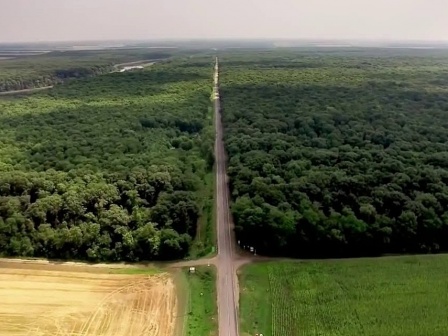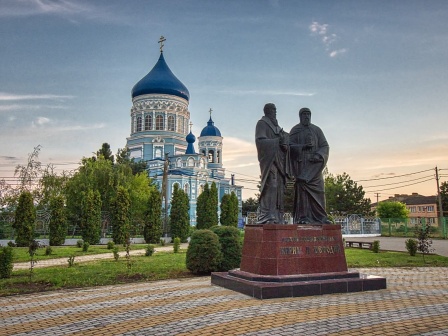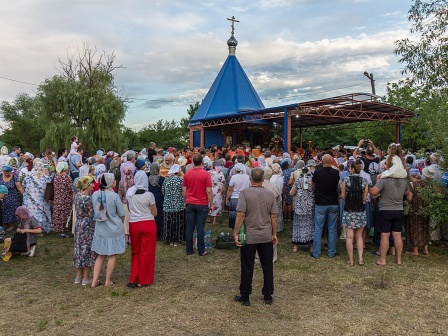Resource base
Climate
- The average annual precipitation is 887 millimeters.
- The prevailing winds blow from the east and northeast.
- Kanevsky District is characterized by mild winters and hot summers.
- The climate of Kanevskaya stanitsa (village) is moderately continental with mild winters that have low snowfall.
- The climate is suitable for agriculture.
Mineral
resources
Fresh water
reserves
- Freshwater reserves cover a water fund of 35,000 hectares.
- There are about 17,000 hectares of water channels in Kanevsky District.
Fertile
lands
- The agricultural land area covers 181,000 hectares, with 177,000 hectares designated as arable land.
Recreational resources
- Kanevsky District boasts abundant recreational opportunities and unique natural healing resources.
- The ichthyofauna in the district’s water bodies falls under the Danube-Kuban section of the Black Sea District.
- The Chelbas estuaries are particularly rich in natural resources, with their shallow depth, slow flow, and dense vegetation creating unique ecological conditions.
- These estuaries are connected to the Beisugsky estuary, allowing species like pikeperch, taran, and bream to spawn.
- The recreational resources in the district hold significant aesthetic and health benefits, making them ideal for tourism.
- With the current available resources, there are plans to develop various forms of tourism in the area.

Chelbas forest
The Chelbas forest is a unique man-made woodland created a century ago by the forester and scientist Stepanov in the arid steppe conditions. Initially, the forest was designed in a square shape with oak trees as the first plantations. Today, the forest covers an area of 1459 hectares with mainly coniferous and broad-leaved trees. The primary tree species include oak, ash, false oak, and black walnut, totaling 34 tree species and 18 shrub species. Since 1895, the Chelbas Forestry has been established in an area previously devoid of forests.
The forest plantations in the North Caucasus hold exceptional and unique value as they were artificially created in the arid steppe conditions. Within the forest, you can find a variety of trees like oak, acacia, ash, hawthorn, linden, juniper, Japanese sophora, and pine, along with medicinal herbs such as elecampane, oregano, St. John’s wort, motherwort, thyme, mint, nettle, melissa, chamomile, snowdrops, mountain flowers, and more, totaling over 120 species. The Chelbas forest is home to elk, wild boars, foxes, pheasants, marsh owls, and other wildlife species. This forest serves as a valuable resource for timber and primary raw materials for the pharmaceutical industry.

Church of the Intercession of the Blessed Virgin Mary
The Church of the Intercession of the Blessed Virgin Mary stands at the heart of Kanevskaya village. Construction of the church began on May 31, 1902, with the laying of the first stone. The church follows a cross-dome plan, consisting of four columns forming a cross shape, with the central drum supporting a single onion dome.
An important part of the structure is the bell tower, which is a round drum with open side openings. Similar to the main dome, it is topped with an Orthodox cross. The interior design was done by Italian masters and local church painters from the Kuban Region. The marble iconostasis, made from eight types of marble, is a distinctive architectural element of the church. On September 30, 2012, a monument to Saints Equal-to-the-Apostles Methodius and Cyril was consecrated on the temple grounds in honor of the temple’s 100th anniversary. The main treasures of the temple are ancient and miraculous icons.

The chapel complex of St. Great Martyr Paraskeva (Krinitsa) is located in the village of Staroderevyankovskaya.
The first historical records of the holy spring, Krinitsa, and the chapel above it date back to 1863. A legend has it that shepherds discovered a small silver icon of the Holy Great Martyr Paraskeva at the spring’s bottom. This discovery led people to visit the spring with faith and prayers, seeking healing. Over time, the chapel was destroyed, and the holy spring’s location became overgrown. However, the memory of St. Paraskeva and her holy spring was always cherished. In honor of the 2000th anniversary of the Nativity of Christ, the Chapel above the holy spring was rebuilt, and the tradition of the annual Stations of the Cross was reinstated.
In the 2000s, an open chapel was constructed. Visitors can get water from the spring at any time. Additionally, reclamation efforts were undertaken to drain the entire area surrounding the chapel complex.
People’s Art Gallery in Privolnaya village
The People’s Art Gallery in Privolnaya village, Kanevsky District, Krasnodar Territory, has been in operation since 1983. It is a unique rural amateur art museum. Currently, the gallery houses over 1,500 pieces of painting, graphics, sculpture, and decorative art. The People’s Art Gallery in Privolnaya village is an example of the successful collaboration between individuals from various countries, artists, and farmers. These folk art galleries are integral parts of our national museum network. Notably, the People’s Art Gallery in Privolnaya village showcases portraits of local workers such as mechanizers, poultry farmers, and milkmaids.

